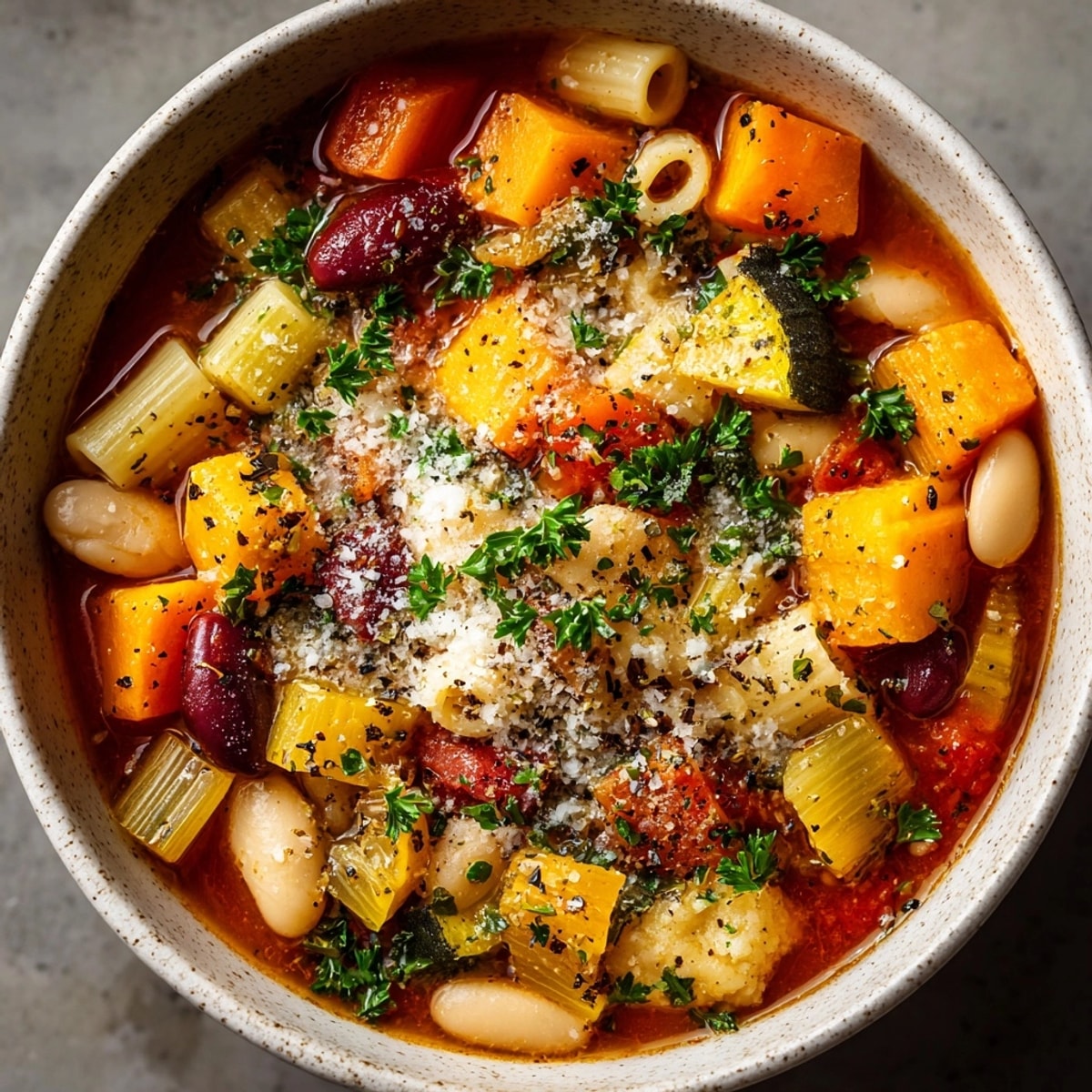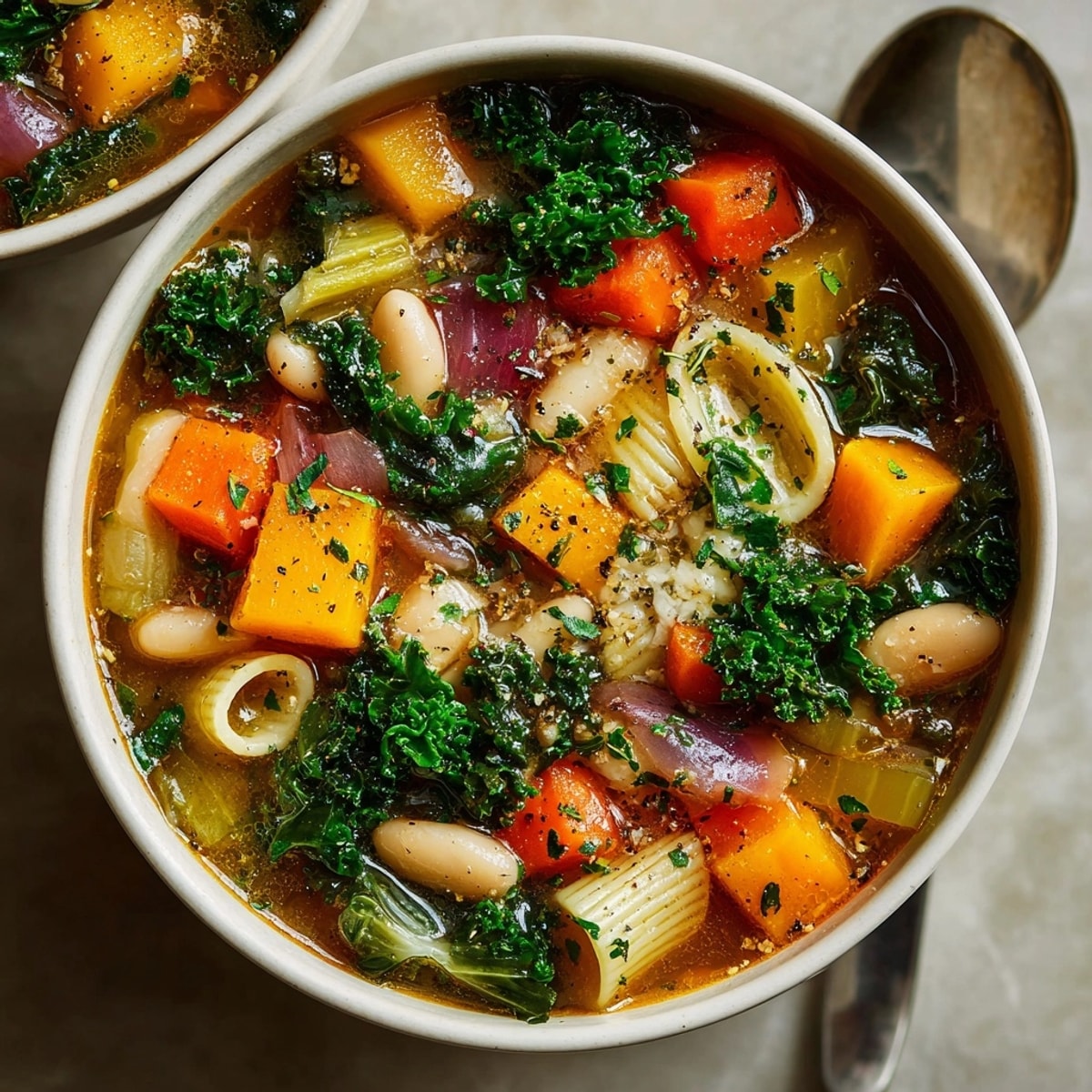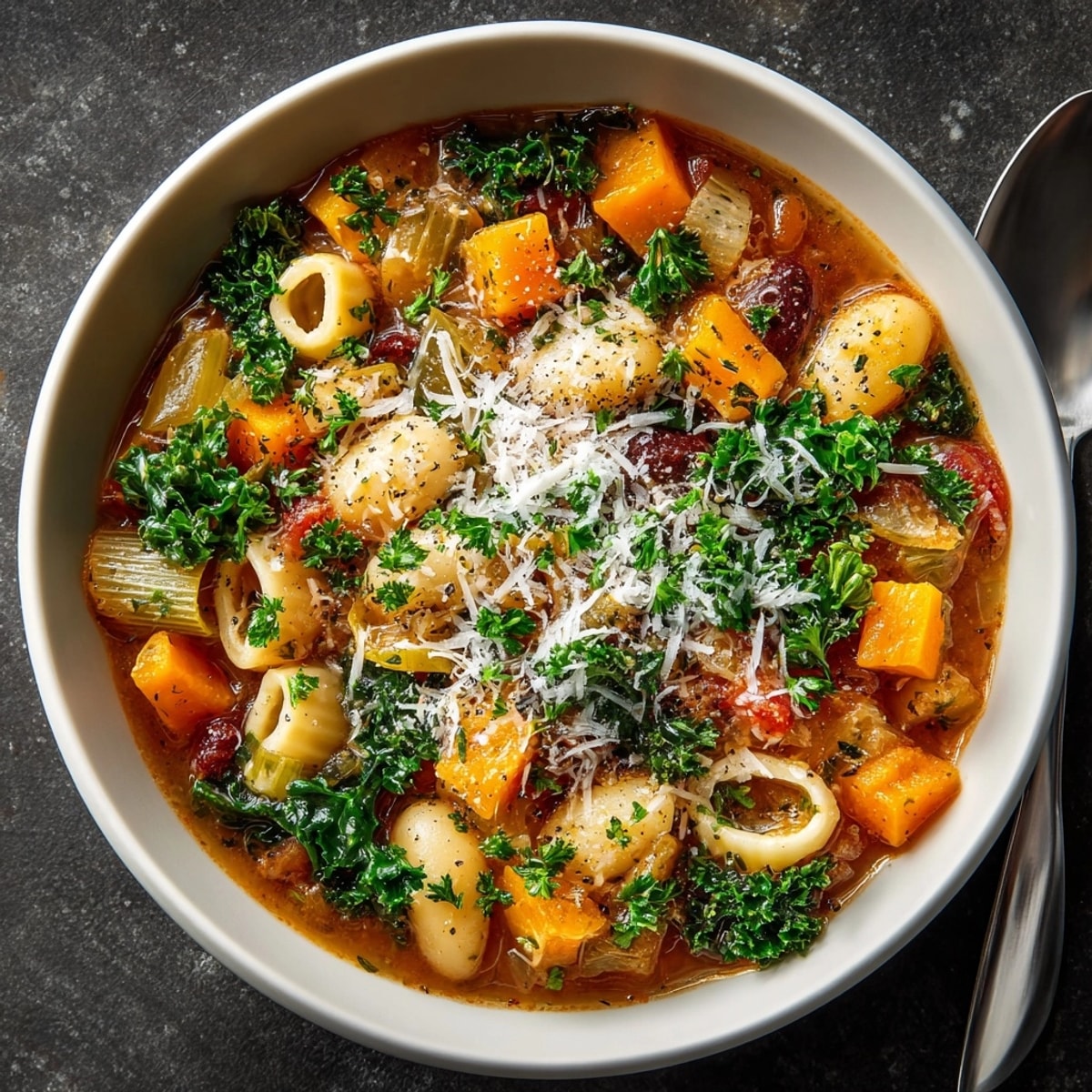 Save
Save This hearty winter vegetable minestrone has been my cold-weather salvation for years. The combination of seasonal vegetables, white beans, and pasta creates a nourishing one-pot meal that warms you from the inside out. The savory tomato broth brings everything together in true Italian comfort food fashion.
I first created this recipe during a particularly brutal January snowstorm when I couldn't make it to the grocery store. Using what I had in my pantry and some root vegetables from the crisper drawer, this soup was born out of necessity but has become a beloved staple that my family requests weekly throughout winter.
Ingredients
- Olive oil: the foundation that builds flavor for the vegetables to sauté properly
- Yellow onion carrot and celery: form the classic Italian soffritto base for incredible depth
- Fennel: adds a subtle anise flavor that makes this minestrone special look for firm bulbs with fresh fronds
- Parsnips and butternut squash: provide earthy sweetness and hearty texture choose firm vegetables with no soft spots
- Savoy cabbage or kale: adds texture and nutrition use the freshest greens available for best results
- Dried herbs: create the classic Italian flavor profile store in a cool dark place for maximum potency
- Canned tomatoes: provide acidity and umami look for San Marzano variety if possible
- White beans: deliver protein and creaminess rinse well to remove excess sodium
- Small pasta shapes: perfect for soups that cook directly in the broth choose a shape that fits nicely on a spoon
- Fresh parsley: brightens the finished soup with color and freshness
Instructions
- Build the Flavor Base:
- Heat olive oil in a large soup pot over medium heat until it shimmers but doesn't smoke. Add onion, carrots, celery, and fennel, stirring frequently to coat everything in oil. Allow vegetables to soften and become fragrant for a full 5 minutes this foundational step creates the flavor backbone of your soup so don't rush it.
- Add Secondary Vegetables:
- Introduce parsnips, butternut squash, and minced garlic to the pot. Stir continuously for about 3 minutes until the garlic becomes fragrant but not browned. The vegetables should begin to soften slightly but will continue cooking in the broth.
- Bloom The Herbs:
- Sprinkle in the oregano, thyme, rosemary, bay leaf, salt, and pepper. Stir continuously for exactly 1 minute. This brief toasting of the dried herbs in oil releases their essential oils and dramatically enhances their flavor in the finished soup. You'll know they're ready when the kitchen fills with their aroma.
- Create The Broth:
- Pour in the canned tomatoes with all their juices, using your spoon to break up any large pieces. Add the vegetable broth and bring everything to a gentle boil. Once boiling, immediately reduce the heat to maintain a simmer, cover with a lid, and let cook for 15 minutes so the vegetables begin to tenderize and the flavors meld together.
- Add Final Components:
- Stir in the chopped cabbage or kale, drained white beans, and pasta. Allow the soup to simmer uncovered for 10 to 12 minutes, stirring occasionally to prevent the pasta from sticking to the bottom. The soup is ready when the pasta is al dente and the vegetables are tender but still hold their shape.
- Finish And Serve:
- Remove and discard the bay leaf. Taste the soup and adjust seasoning with additional salt and pepper if needed. Stir in the fresh parsley right before serving to maintain its bright color and flavor. Ladle into warm bowls and offer grated Parmesan cheese at the table for each person to add as desired.
 Save
Save The white beans are truly the secret star of this recipe. While they might seem humble, they release a subtle creaminess into the broth while maintaining their texture. My grandmother always said a good minestrone needs beans to be authentic, and after years of making this soup, I couldn't agree more. They transform what could be a simple vegetable soup into a satisfying meal.
Storage and Reheating
This minestrone actually tastes better the next day after the flavors have had time to develop further. Store cooled soup in airtight containers in the refrigerator for up to 5 days. When reheating, add a splash of broth or water as the pasta will continue to absorb liquid. Heat gently on the stovetop until just simmering to preserve the texture of the vegetables.
Smart Substitutions
No butternut squash? Sweet potatoes or pumpkin work beautifully in its place. The key is to cut them into uniform pieces so they cook evenly.
For a gluten free version, simply substitute the traditional pasta with your favorite gluten free variety or use cooked rice added at the end instead. You can also omit the pasta altogether and add an extra can of beans for a higher protein option.
Short on time? Use frozen diced vegetables for the carrots, celery, and butternut squash. They work surprisingly well and can cut your prep time in half without sacrificing flavor.
Make It a Meal
To transform this soup into a complete dinner experience, serve it with a simple arugula salad dressed with lemon juice and olive oil. The peppery greens and bright acidity perfectly complement the rich soup.
For a truly authentic Italian experience, toast thick slices of rustic bread, rub with a raw garlic clove, and drizzle with good quality olive oil. This traditional "fettunta" is perfect for dipping into the flavorful broth.
If you're entertaining, set up a minestrone bar with small bowls of extra toppings like chopped fresh herbs, red pepper flakes, additional grated cheese, and lemon wedges so guests can customize their bowls.
 Save
Save Seasonal Adaptations
Spring Version use asparagus, peas, and leeks instead of winter vegetables
Summer Variation swap in zucchini, fresh tomatoes, and green beans for a lighter approach
Fall Adaptation incorporate mushrooms, pumpkin, and Swiss chard for an earthy flavor profile
This hearty minestrone is a comforting and nutritious meal perfect for any season. Enjoy this flavorful soup with your loved ones.
Recipe FAQ
- → What vegetables are best for this minestrone?
Root vegetables such as parsnips, carrots, and butternut squash are ideal, along with sturdy greens like kale or savoy cabbage. Feel free to substitute with what you have, such as Swiss chard or spinach.
- → Can I make this dish vegan?
Absolutely. Simply omit Parmesan cheese or substitute with a vegan cheese alternative to keep the soup dairy-free and vegan-friendly.
- → Is fresh fennel necessary?
Fennel adds a subtle flavor but is optional. The soup remains delicious without it, so you can skip it based on availability or preference.
- → Which pasta shape works best?
Small pasta shapes like ditalini, elbow macaroni, or small shells blend easily with the vegetables and beans, ensuring a delightful texture in every spoonful.
- → How can I enhance the broth’s flavor?
Adding a rind of Parmesan cheese while simmering adds depth and richness. Remove it before serving. You can also adjust herbs and seasonings to taste.
- → What’s a good side for this dish?
Crusty bread and a light Italian red wine are classic accompaniments, perfect for soaking up the savory broth.